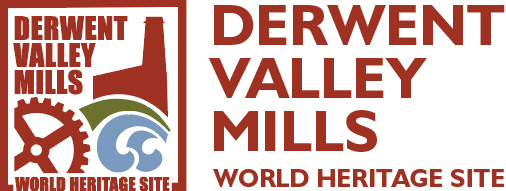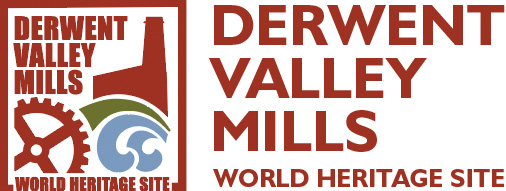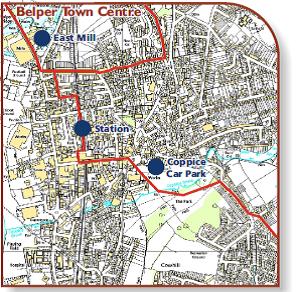Station to Station Walk 3

SCENIC STATION TO STATION WALK – WALK 3: Belper to Ambergate
Distance 8 miles – starting at Belper Station
These walks in the beautiful Derwent Valley Mills World Heritage Site have been designed to link together the stations along the scenic Derwent Valley Line. Choose one or more walks to create a circular route or use the train to get back to the start.
The train service through the Derwent Valley provides a great opportunity to leave the car at home, relax and enjoy the great views along the way. Trains on the Derwent Valley line operate a frequent service between Newark (Mon-Fri only), Nottingham, Beeston, Attenborough, Long Eaton, Derby and the local Derwent Valley Line Stations.
However, if you do travel to the Derwent Valley by car, there are car parks at each of the stations, from where you can start your circular or linear walk and travel back by train or on various bus services.
For train times call National Rail Enquiries 08457 48 49 50 or visit www.nationalrail.co.uk.
Alternatively, for local bus times, call Traveline 0871 200 22 33 or visitwww.derbyshire.gov.uk/buses.
All walks have been carefully waymarked by green discs bearing a coloured arrow. Yellow indicates footpath status to be used by walkers. Blue arrows indicate bridleway status and can be enjoyed by walkers, cyclists and horseriders. All the discs bear the legend Derwent Valley Walks.
This is Walk 3 on this leaflet: Station to Station Walk Duffield to Ambergate
A longish walk from Belper, along the valley ridge with 2 steady climbs through farmland and ancient woods.
Using the town map below find East Mill and the river. Take the footpath left immediately after crossing the bridge and head on for some way to where the path forks towards the river. Pass through a stile on the right and begin to climb the valleyside to eventually emerge by the side of a large house on to Chevin Road. Turn left and soon right up a footpath leading to North lane.
Turn right onto the route of the Midshires Way and go downhill for 100 yards at Farnah Green to a fingerpost on the left. Keep to the left side of the wall and follow the path as it leads into a wooded valley, the “Depth o’Lumb”. Keep to the edge of the wood before entering fields and descending to Lumb Lane then downhill to the road.
Turn right, then left on Longwalls Lane for about a mile. Emerging out onto a metalled road turn left downhill, then right into fields. Still following the Midshires Way follow the ridge uphill quite a way through a series of “knee trapper stiles”. After the summit and on entering a large field veer off to the right to two more stiles next to gates and up to another stile, then aim for a small footbridge. At the lane turn right past Sandyford Lane to the T-junction. Turn right then left into fields then into Netherpark Farm. Go through the yard and cross the road onto a track into Shining Cliff Wood.
Shining Cliff Wood is important both historically and naturally. The area has been wooded for over a thousand years (probably much longer) and is a remnant of the Duffield Frith hunting forest. Changes have taken place in the wood over the centuries with new species being introduced, eg sweet chestnut and larch. Shining Cliff, however still provides an excellent example of an ancient semi-natural woodland, with birch, holly and hazel prevalent. Part of the wood is a Site of Special Scientific Interest (SSSI) because of its plant life.
At the first main fork, turn right (leaving the Midshires Way) and then right again just beyond the former Youth Hostel, continue to the Mermaid’s Pool and veer left up to a main track. Turn left and follow this until the road is reached. Turn left, over the river to the A6.
Up until the nineteenth century, travel in this part of Derbyshire was not easy, the Derwent Valley being heavily wooded and very marshy. A direct road link was made in 1759 between Cromford and Nottingham. The road between Cromford and Belper, along the river, only arrived in 1818 when a partnership of Arkwright, Strutt and Hurt built a public turnpike, the present A6.
Cross the A6 and go left to the A610. Go under the railway arch and turn right to reach the station.


